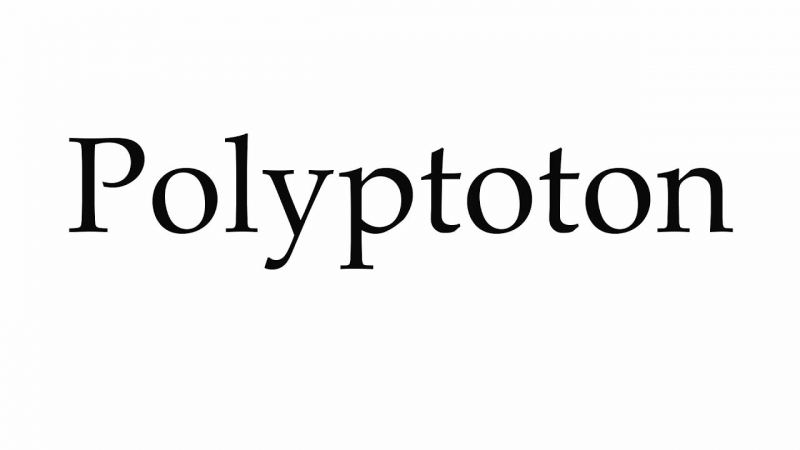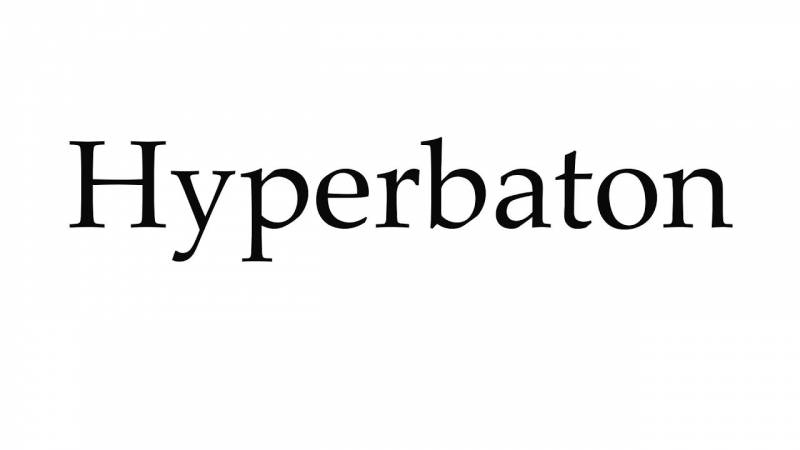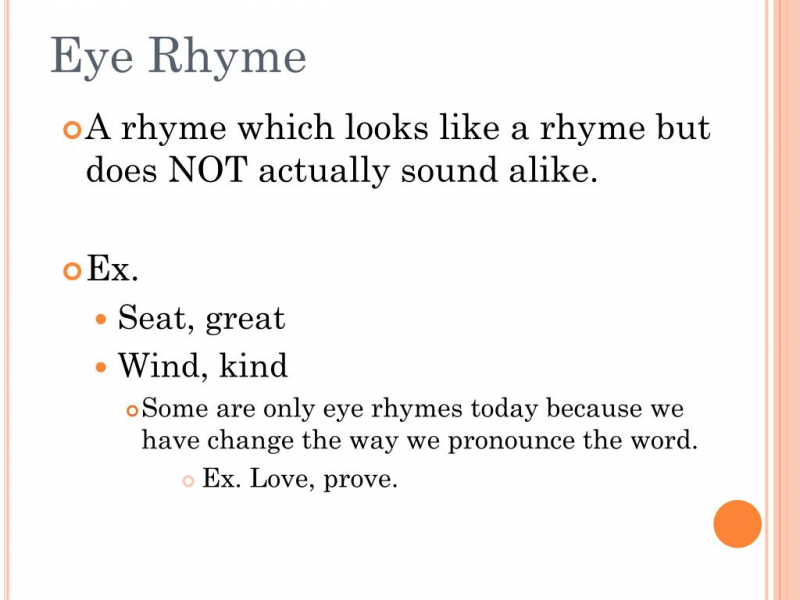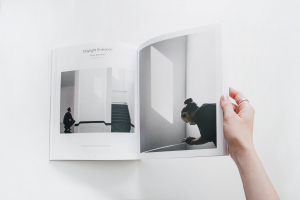Top 7 Obscure Literary Terms
Literary words describe the method, etiquette, and structure that authors and presenters employ to expertly accentuate, adorn, or reinforce their writings. ... read more...Literary terminology also contain potent metaphorical language that authors employ to evoke a variety of emotions, including guilt, rage, and bliss, as well as to help readers perceive the world in fresh and wondrous ways. Word combinations can be used to add rhythm and musicality to writing, poetry, and songs. Despite the fact that English majors throughout the world presumably feel as though they have literary jargon flowing out of their ears, they could struggle to define terms like lipogram or clerihew, much alone write one. Let's look at some unusual literary phrases that you might not be familiar with.
-
An alternative meter employed in poetry is referred to as anacrusis. It happens when a poet starts a line with an unstressed syllable. This might come after yet another strained or unstressed beat. Some academics question whether readers ought to be worried about this phenomena at all. Anacrusis is viewed by some academics as a meaningless word that names an impossibility. They think that a metrical pattern cannot exist without the inclusion of an unstressed syllable. Outside of the pattern, it cannot sit. The way that particular pupils and readers choose to interpret these additional syllables is up to them.
Anacrusis and catalexis are frequently investigated together. The last phrase alludes to the metrical foot that appears at the conclusion of a line of verse when a syllable is absent. Typically, this is the final syllable of a stanza or the poem as a whole. It works best when the reader anticipates a stressed beat at the conclusion of the line and a whole syllable is absent. This could give the impression that something is missing or that something else is going to happen. Acephalous is connected to anacrusis as well. In contrast to catalexis, it The first syllable from the metric pattern is dropped by the poet when it is used.

Pronunciation Guide https://www.youtube.com/watch?v=CktkNesSQfI -
A figure of speech known as polyptoton uses words with the same root many times (such as "blood" and "bleed"). Because it uses both the words "watch" and "watchmen", the question "Who shall watch the watchmen?" is an example of polyptoton. Both Latin and Old English poetry frequently employ polyptoton. Though less often now, it may still be found in speeches, fiction, and poetry.
As in the aforementioned example, polyptoton is most frequently seen within a single sentence: "Who shall monitor the watchmen?" In fact, according to some rhetoricians, polyptoton can only happen if the repeated phrases are near to one another. Polyptoton, however, is viewed by some literary critics as something that can happen over longer passages of text, such as a paragraph, an essay, or even a book. The book Frankenstein is the example used the most frequently for this kind of polyptoton. Mary Shelley carefully uses words with the same root (wretched, wretchedly, and wretchedness) throughout the book, describing the creature that Frankenstein creates as a wretch.
In phrases like sanctum sanctorum ("holy of holies"), the form is relatively common in Latin Christian poetry and prose. It later made its way into other languages, including Old English, which naturally preferred the prevalent alliteration that is a feature of polyptoton—in fact, polyptoton is "much more prevalent in Old English verse than in Latin verse". However, Old English's unique superlative genitive does not appear in any other poetry than Latinate Christian poetry.

Pronunciation Guide https://www.youtube.com/watch?v=mbjMEEIIPFY -
A combination of languages is utilized in macaronic language, especially in bilingual puns or other instances where the languages are employed in the same context (rather than simply discrete segments of a text being in different languages). Effectively, hybrid words are "internally macaronic". Using more than one language or dialect during a same discourse is known as code-switching in spoken language. In specifically, macaronic Latin is a muddled jargon made up of terms from the vernacular that have been given Latin ends or Latin phrases that have been pastiche-style combined with words from the vernacular (compare dog Latin).
The New Latin macaronicus, which is derived from the Italian maccarone, is where the name macaronic originates ("dumpling," regarded as coarse peasant fare). When languages are combined with a comedic or satirical aim or effect, the term is typically disparaging and is employed, however it is occasionally used to refer to more serious mixed-language writing. Tisi degli Odassi created the form in the late 15th century, and Teofilo Folengo, a dissolute Benedictine monk who used Latin form and syntax with an Italian vocabulary in his satirical chivalric epic Baldus, popularized it (1517; Le maccheronee, 1927–28). He referred to the macaronic as the literary counterpart of the Italian cuisine, which was a basic concoction of wheat, butter, and cheese in the 16th century.

How to Pronounce Macaroni https://www.youtube.com/watch?v=tDUoO37mjZA -
In its original use, the term "hyperbaton" refers to a figure of speech in which additional words are inserted to break up a statement. The term "anastrophe" is also used more broadly in current language to refer to figures of speech that reverse the word order of sentences. The term is derived from the Greek hyperbaton, which means "stepping over" and is formed from the prefix hyper ("over") and the verbal adjective suffix bainein ("to step"). The reader is supposed to "step over" the words added in between in order to comprehend the sentence.
In highly inflected languages, whose sentence meaning does not heavily depend on word order, the separation of related words for emphasis or impact is achievable to a far higher extent. The hyperbaton effect is frequently used to accentuate the initial word in Latin and Ancient Greek. It has been referred to as "perhaps the most obviously foreign element of Latin word order." Donatus includes hysterologia, anastrophe (for which the term hyperbaton is occasionally used figuratively), parenthesis, tmesis, and synchysis under the heading of hyperbaton in his work On Tropes. Hyperbaton is a very common technique in poetry, especially poetry written after the first century BC; about 40% of Horace's adjectives are separated from their nouns.

YouTube>Pronunciation Guide https://www.youtube.com/watch?v=qv_wgom2Bfs -
An eye rhyme, also known as a visual rhyme or a sight rhyme, is a rhyme when two words have the same spelling but distinct pronunciations. The names "Sean Bean" (pronounced "Shawn Been") and the "Stone of Scone" are two examples (pronounced "stone of skoon"). Many earlier English poems, notably those written in Early Modern and Middle English, include rhymes that were once true or complete rhymes but are now perceived as eye rhymes by modern readers due to changes in pronunciation, particularly the Great Vowel Shift. We refer to these as historical rhymes. Linguists employ historical rhymes to reassemble ancient languages' pronunciations; Old Chinese, whose writing system does not explicitly reference pronunciation, makes use of historical rhymes particularly frequently.
Poems from centuries past that rhymed sometimes no longer do so. They now function as eye rhymes. The poet did not intend for this to happen. Some poems were written with the intention of rhyme centuries ago, according to the Wikipedia entry on eye rhymes. Due to changes in how words are pronounced over time, some of these rhymes have evolved into eye rhymes. Examples include "laughter", "come", "home", and "ocean". Absolutely not rhyme and dime or eye and by.

SlideServe https://www.youtube.com/watch?v=Zc4ZwmbX1V4 -
On the approach to the bride's marital bedroom, a poet would compose an epithalamium for her. Through the course of classical history, this genre remained popular. Catullus, a famous Roman poet, wrote an epithalamium that was either a translation of or at least an inspiration from a now-lost Sappho poem. Origen suggested that the Song of Songs might be an epithalamium on Solomon's union with the daughter of the Pharaoh. Originally sung by a group of boys and girls outside the nuptial chamber, it was a song in praise of the bride and the bridegroom among the Greeks.
The bride and bridegroom were awakened in the morning using one form, according to the Scholast on Theocritus, and in the evening using an other one. In either case, the song's major focus was on blessing requests and happy prophecies, occasionally broken up by the antiquated chorus Hymen o Hymenaee, as was only fitting. A similar practice was popular among the Romans, but the song was only sung by girls after the wedding guests had left, and it contained much more of what contemporary attitudes would consider to be obscene.
The epithalamium underwent extensive cultivation and was transformed into a unique literary style by the poets. Another famous painting style in Italy during the Renaissance was epithalamia. These were nudists that were given as wedding presents with the intention of wishing the newlyweds fertility and happiness. A frequent topic was Venus and Cupid. In Lorenzo Lotto's epithalamic painting, Cupid is seen urinating on Venus as a puer mingens, a Renaissance symbol for fertility.

YouTube>SDictionary https://www.youtube.com/watch?v=Ltvb7OhNvlA -
Epizeuxis is the use of a word or phrase more than once quickly, usually inside the same sentence, to emphasize a point or add vehemence. Diacope, which contains word repetition that is broken up by one or a few intervening words, is a rhetorical device that is closely connected to this one. An epizeuxis is a figure of speech in which a word or phrase is repeated right after another without any syllables in between. The phrase "Words, words, words" spoken by Hamlet in the play Hamlet in response to an inquiry about what he is reading is an example of epizeuxis.
The link between epizeuxis and the figure of speech known as diacope is rather unclear, especially online. Numerous websites claim that the two are interchangeable, however that is untrue. The two figures of speech are different even though they both require the repeating of words or sentences. Words, words, words is an example of epizeuxis, which is the immediate repetition of words or phrases without any breaks in speech. The repetition of words or phrases with a few words in between is known as diacope. Diacope is used, for instance, in the opening line of Anna Karenina: "Happy families are all alike; every unhappy family is unhappy in its own way".

YouTube>Pronunciation Guide https://www.youtube.com/watch?v=GjwP4DiZgWQ





















